| Home |
| Rarities Committee |
| IL400 Club |
| Checklist |
| Monthly Summaries |
| Birding Reports |
| Rarity Alerts |
| Historical Records |
| Articles |
| Gallery |
| Video Clips |
| Contact Us |
Bulletin 8:01 Rare Birds in Israel - December/2012
Eyal Shochat and Susannah B. Lerman on behalf of the IRDC
The Committee reviews all submitted records of rare species demanding review, or otherwise such records that were virtually well documented. Other records of rare / difficult species mentioned on web forums, blogs, or bird mail lists with no supportive images should be submitted to the committee before they can be assessed.
Section 1: Records accepted to category A:
Red-throated Diver (Gavia stellata)
23/12/09 Two young birds were found in the Acre old sea-port (Amir Ben-Dov). One individual remained in this area until 16/1/10. A former record of this species in Israel was from Jaffa in 2001. The 5th record for Israel.
| Red-throated Diver(Gavia stellata) | ||
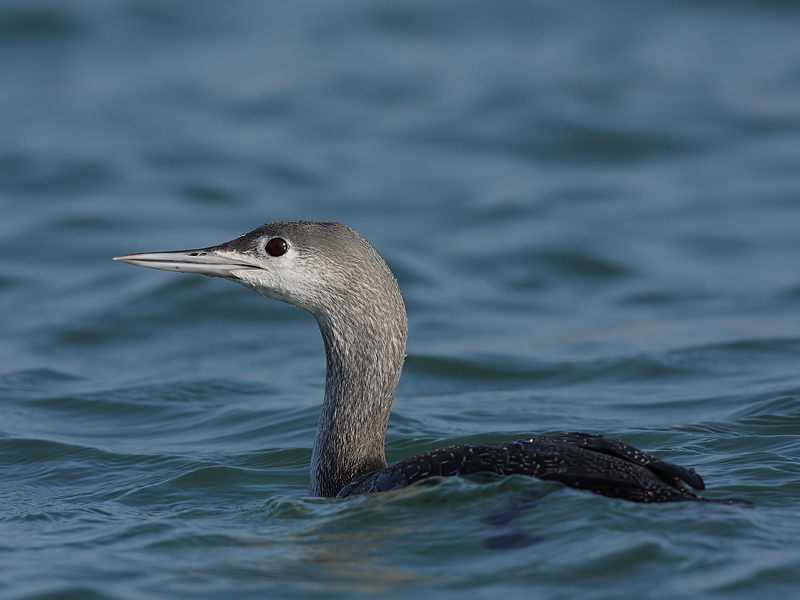 |
||
| Acre, The 5th record for Israel (Yoav Perlman) | ||
Great Shearwater (Puffinus gravis)
3/2/10 One individual flying south, offshore Jaffa (Barak Granit and Eyal Shochat), the 5th record for Israel.
28/1/12 One flying south, off shore Shikmona (Tuvia Kahn) the 6th record for Israel.
Swinhoes Storm Petrel (Oceanodroma monorhis)
24/1/08 - One moribund at Eilat and brought dead to the IBRC (Noam Weiss). The 5th record for Israel.
| Swinhoes Storm Petrel(Oceanodroma monorhis) | ||
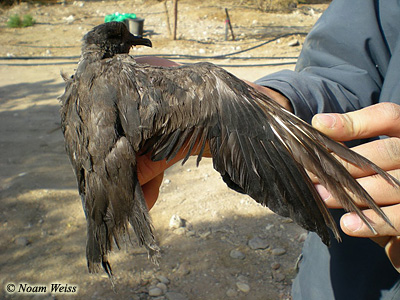 |
||
| Eilat, The 5th record for Israel (Noam Weiss) | ||
Whooper Swan (Cygnus cygnus)
4/12/11 Nine, including five adults and four immatures were found at the Tel Anafa fields, Eastern Hula Valley (Yossi Lev Ari). Seen throughout the winter by many observers. The 4th record for Israel.
Bean Goose (Anser fabalis)
14-27/3/07 One flew inland at Eilats North Beach on 14.3.07 (J. P. Smith). Found later on at Eilats football patch, and remained there till 27/3/07, by then, was seen by many birders. The 1st Israeli record.
| Bean Goose(Anser fabalis) | ||
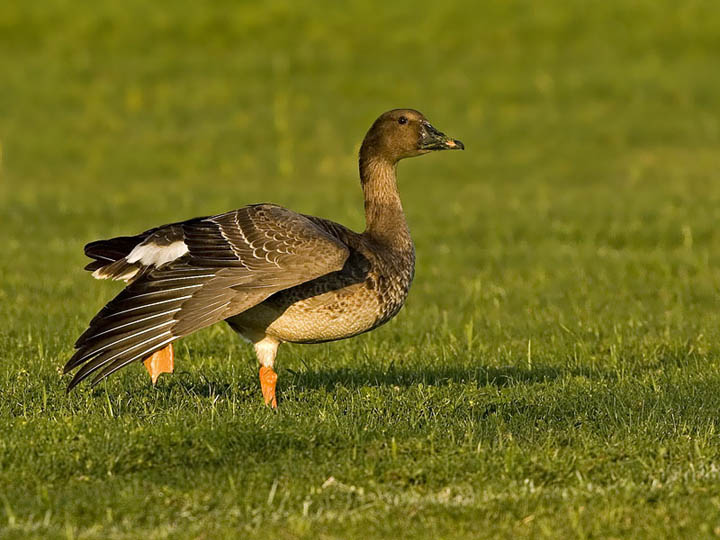 |
||
| Eilat, Been Goose the 1st record for Israel (Rony Livne) | ||
8/12/11 One found at the Kefar Baruch Reservoir (Tuvia Khan). Seen until late February 2012.The 2nd Israeli Record. Ssp of both birds is still under review.
| Bean Goose(Anser fabalis) | ||
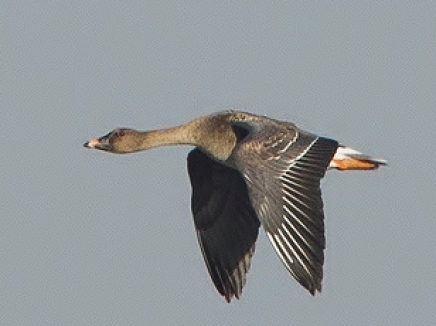 |
||
| Kefar Baruch Reservoir, Been Goose the 2nd record for Israel (Yoav Perlman) | ||
Greater Scaup (Aythya marila)
14/1/05 a male type was found at the Kefar Rupin fish ponds (Ben Dvir). The 18th record for Israel.
| Great Scaup(Aythya marila) | ||
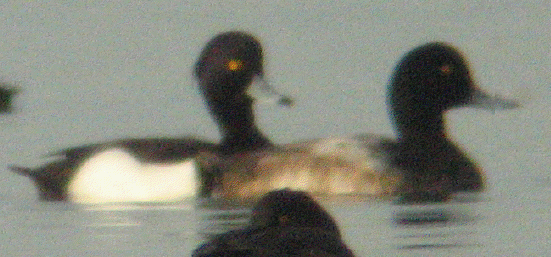 |
||
| Kfar Rupin, Greater Scaup (Ben Dvir) | ||
Common Goldeneye (Bucephala clangula)
8/2/08 Two females found at Metzer reservoir, Golan Hights (Tamir Simantov et al.) remaind for a while and seen and photographed by many birders The 26th recor for Israel and the first since 1990.
| Common Goldeneye(Bucephala clangula) | ||
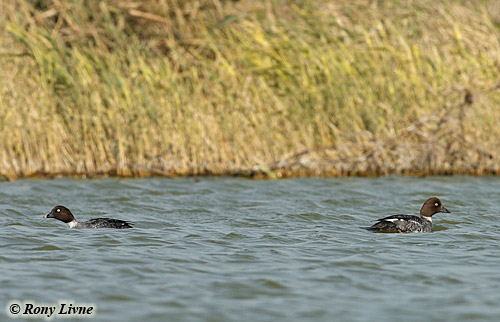 |
||
| Metzer reservoir, Goldeneye (Rony Livne) | ||
13-19/5/12 A 2nd year female at K19 ponds, Eilat (N. Weiss et al.) the 27th record for Israel.
| Common Goldeneye(Bucephala clangula) | ||
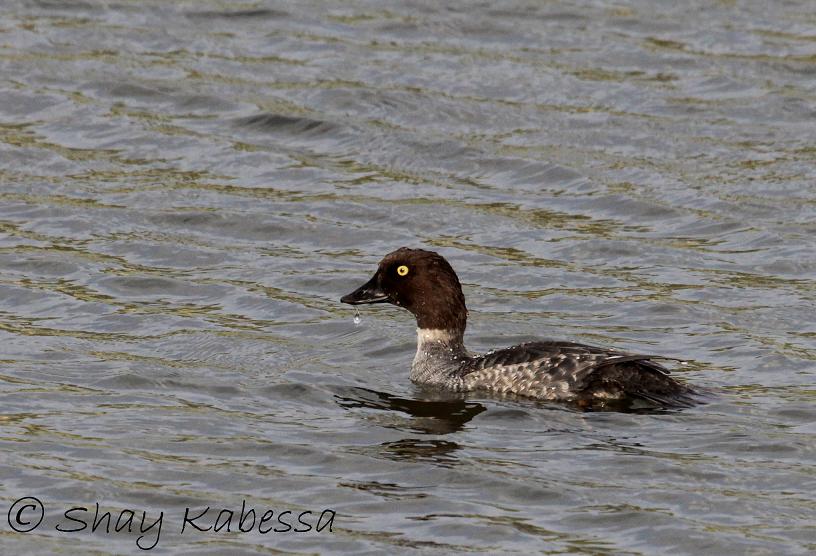 |
||
| Eilat, Goldeneye (Shay Kabessa) | ||
Bateleur (Terathopius ecaudatus)
28/3/08 - A juvenile bird migrated north-east over Eilat birding park amongst Steppe Buzzards (N. Weiss, R. Mizrachi, A. Cohen). 7th Israeli record.
| Bateleur(Terathopius ecaudatus) | ||
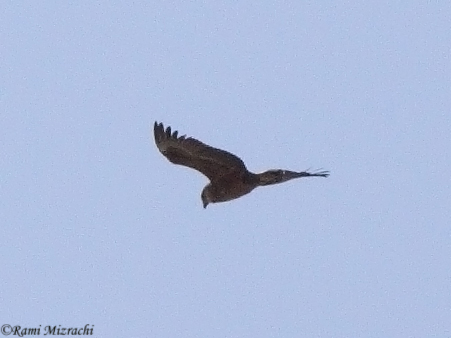 |
||
| Eilat, Bateleur (Rami Mizrachi) | ||
Great Bustard (Otis tarda)
24/1/08 One individual found east of Ma'ale Gamla in the Golan heights (Amizur Boldo et al.). 7th national record.
| Great Bustard(Otis tarda) | ||
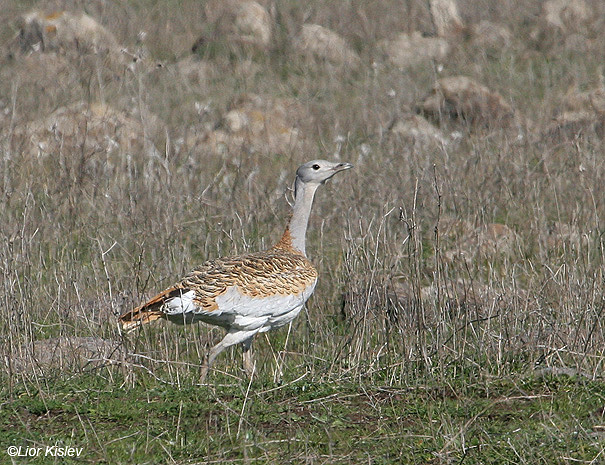 |
||
| Golan Heights, Great Bustard (Lior Kislev) | ||
American Golden Plover (Pluvialis dominica)
21/11/08 A bird found at Ma'agan Michael (Asaf Mayrose and Shai Agmon) was first considered as a Pacific Golden Plover (Pluvialis fulva). However, based on images soon after the initial consideration, James P. Smith identified the bird as the first national record of American Golden Plover . The bird remained at Ma'agan Michael until mid December 2008.
| American Golden Plover(Pluvialis dominica) | ||
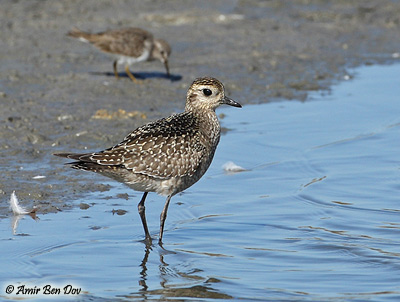 |
||
| The Maagan Michael bird the 1st record for Israel (Amir Ben-Dov) | ||
On 24/1/09 an American Golden Plover was found at Acre beach (Sason Hacham). This individual, seen until late February was considered to be the same bird from Ma'agan Michael but could just well be another individual Representing the 2nd record for Israel.
| American Golden Plover(Pluvialis dominica) | ||
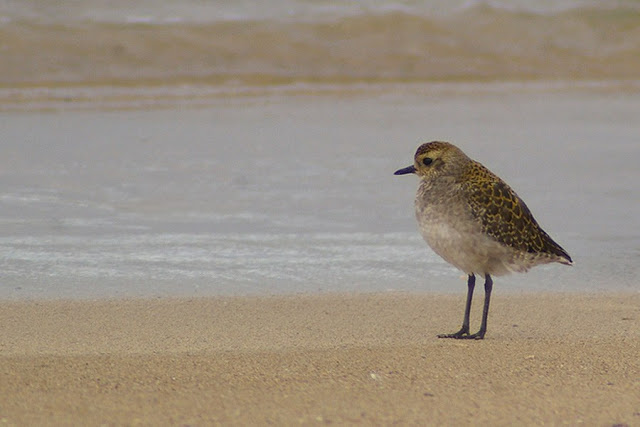 |
||
| The Acre bird the 2nd record for Israel (Eyal Shochat) | ||
Pectoral Sandpiper (Calidris melanotos)
30/4 3/5/08 One at Yotvata sewage ponds (Marcus Kraig et al.) the 6th record for Israel
| Pectoral Sandpiper(Calidris melanotos) | ||
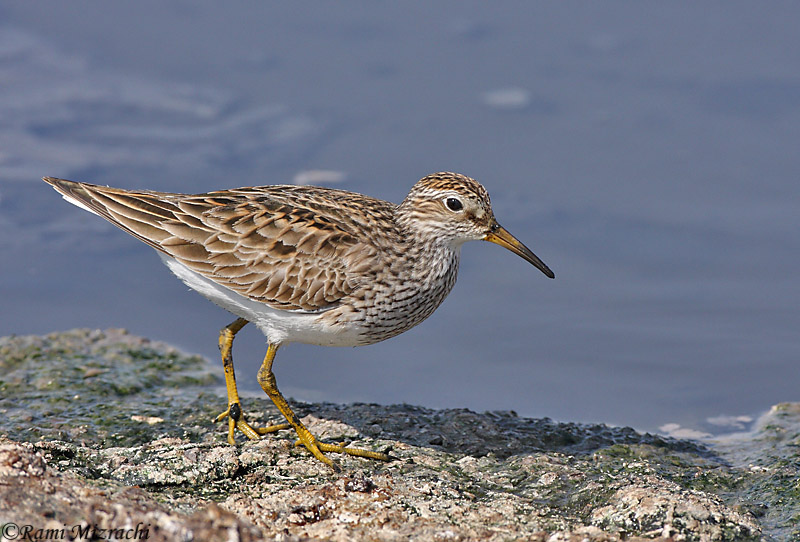 |
||
| Yotvata, Pectoral Sandpiper (Rami Mizrachi) | ||
7/5/08 One at Gesher ponds, Beit She'an Valley (Amir Ben-Dov, Oz Horine, Shachar Alterman). This was a different individual to the Yotvata bird, based on plumage and therefor representing the 7th record for Israel.
| Pectoral Sandpiper(Calidris melanotos) | ||
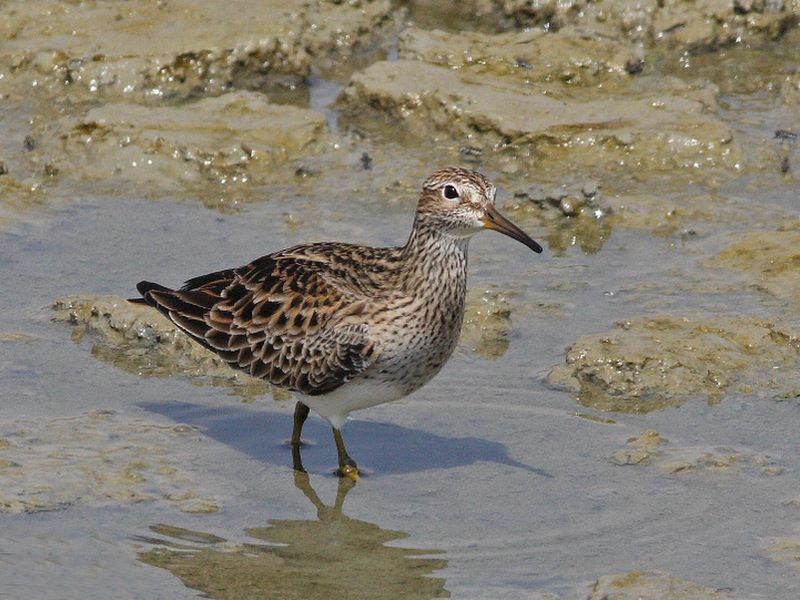 |
||
| Gesher ponds, Pectoral Sandpiper (Shachar Alterman) | ||
1-4.12.10 One at Samar sewage ponds (Itai Shanni et al.) the 10th record for Israel. There are Two more records (Eilat k.20 April 2009 and from Maagan Michael September 2009) which waits for review.
| Pectoral Sandpiper(Calidris melanotos) | ||
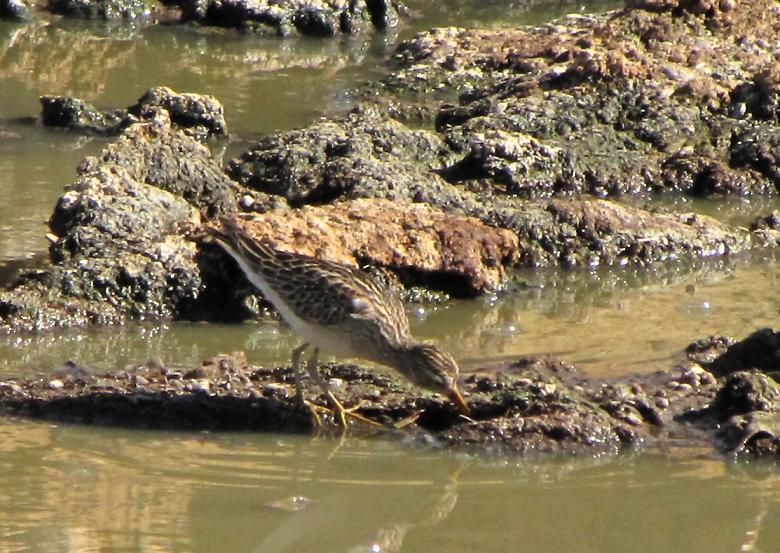 |
||
| Samar, Pectoral Sandpiper (Itai Shanni) | ||
Lesser Yellowlegs (Tringa flavipes)
25/9/08 One at Neve Eitan ponds, Beit Shean Valley (Peter Kinsella, Lee Gregory and the northern Vallies Raptor Survey Team). Second Israeli record.
| Lesser Yellow Legs(Tringa flavipes) | ||
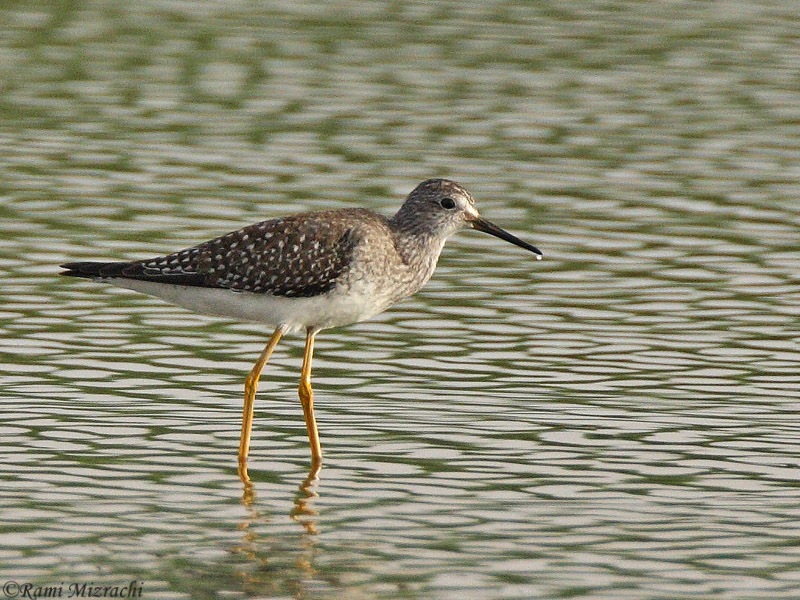 |
||
| Neve Eitan, Lesser Yellowlegs (Rami Mizrachi) | ||
Great Crested Tern (Sterna bergii)
8/12/07 Two at North Beach, Eilat (Rami Mizrachi and Tuvia Kahn). This represents an exceptional winter record. The species normally occur between March August.
8/4/12 One at North Beach, Eilat (Avner Rinot et al.)
Oriental Turtle Dove (Streptopelia orientalis)
23.10.07 - Adult bird at the western canal of the Hula valley re-flooded area (Amir Balaban et al.). The 4th record for Israel.
| Oriental Turtle Dove(Streptopelia orientalis) | ||
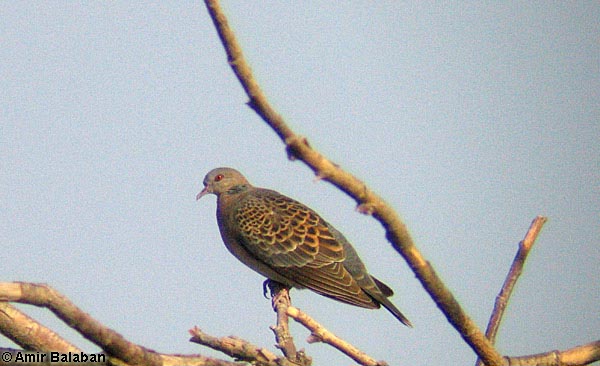 |
||
| Hula valley , Oriental Turtle Dove (Amir Balaban) | ||
Black Crowned Sparrow Lark (Eremopterix nigriceps)
3-15/11/10 One male at Yotvata fields (Itai Shanni et al.)
| Black Crowned Sparrow Lark(Eremopterix nigriceps) | ||
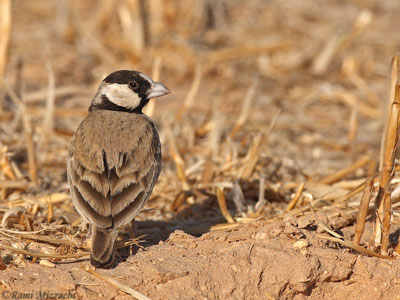 |
||
| Yotvata, Black Crowned Sparrow Lark (Rami Mizrachi) | ||
Blyth's Pipit (Anthus godlewskii)
13/3/08 One at Rishpon beach, central coastal plains (Barak Granit anf Tuvia Kahn). The 4th record for Israel and the first and only spring record? The speices found wintering in the coastal plain already at 1999 (maagan Michael the 2nd Israeli record). Although the Rishpon bird was not relocated later on it is well possible it had wintered in the area.
Masked (white) Wagtail (Motacilla a. personata)
18/3/11 One at Ma'agan Michael (Amir Ben-dov). 2nd Israeli record of this race.
| Masked (white) Wagtail(Motacilla a. personata) | ||
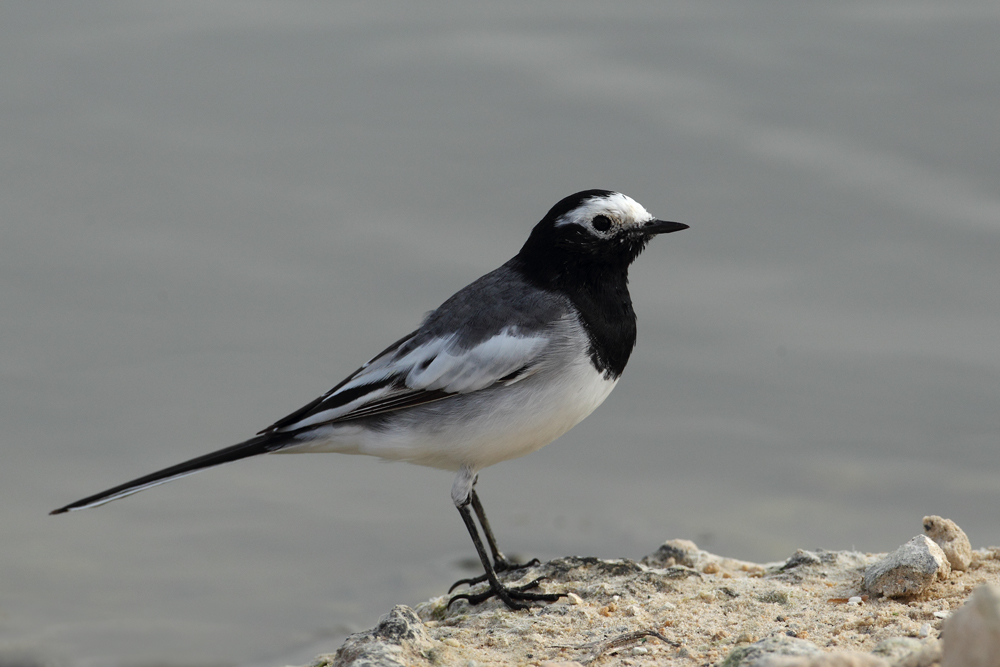 |
||
| Maagan-Michael, Masked Wagtail (Amir Ben-Dov) | ||
Black-throated Accentor (Prunella atrogularis)
8-19/11/11 One caught at Netiv Halamed Hei Reservoir (Ron Haran et. al.). Second national record, and first since 1982.
| Black-throated Accentor(Prunella atrogularis) | ||
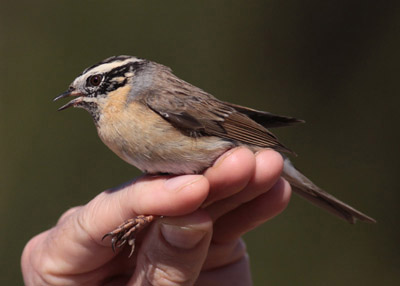 |
||
| Netiv Halamed Hei Reservoir, Black-throated Accentor (Ron Haran) | ||
Basalt Wheatear (Oenanthe Warriae)
19/1/10 One at Kefar Baruch Reservoir, Jezreel Valley (Uri Mackover)
| Basalt Wheatear(Oenanthe Warriae) | ||
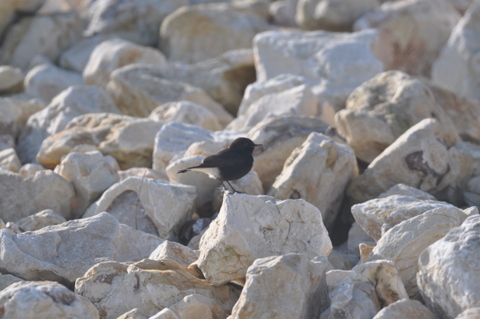 |
||
| Kefar Baruch Reservoir Wheatear (Uri Mackover) | ||
21-30/3/12 One at Uvda Valley, southern Negev (Daniel Berkovitch). These two records represent Israel's 5th and 6th records, see section 3.
| Basalt Wheatear(Oenanthe Warriae) | ||
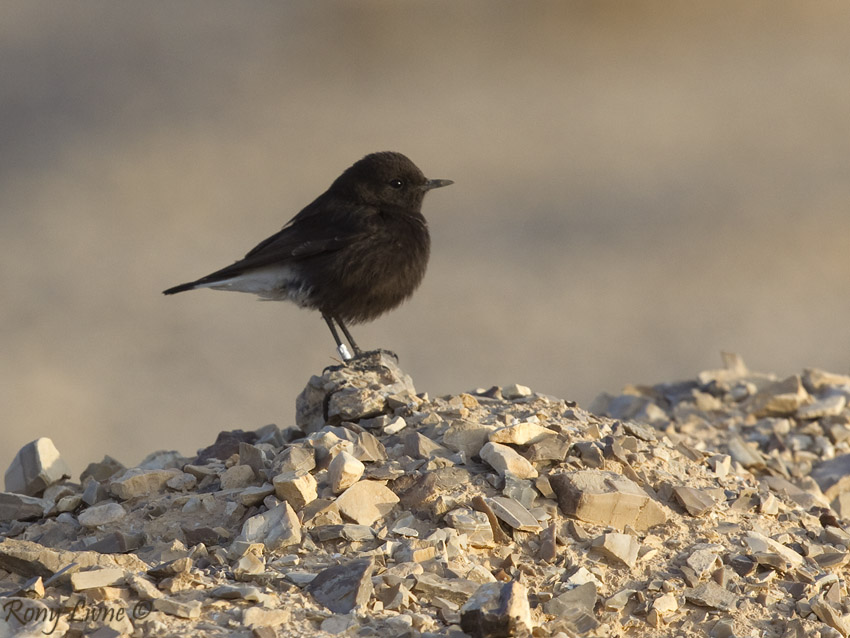 |
||
| Uvda Valley Basalt Wheatear (Rony Livne) | ||
Red-flanked Bluetail (Tarsiger cyanurus)
19/11/11 One at Eilat Cemetery (Martin Wolinski and Simon Ingram together with a Birdfinder's group). 2nd Israeli Record.
| Red-flanked Bluetail(Tarsiger cyanurus) | ||
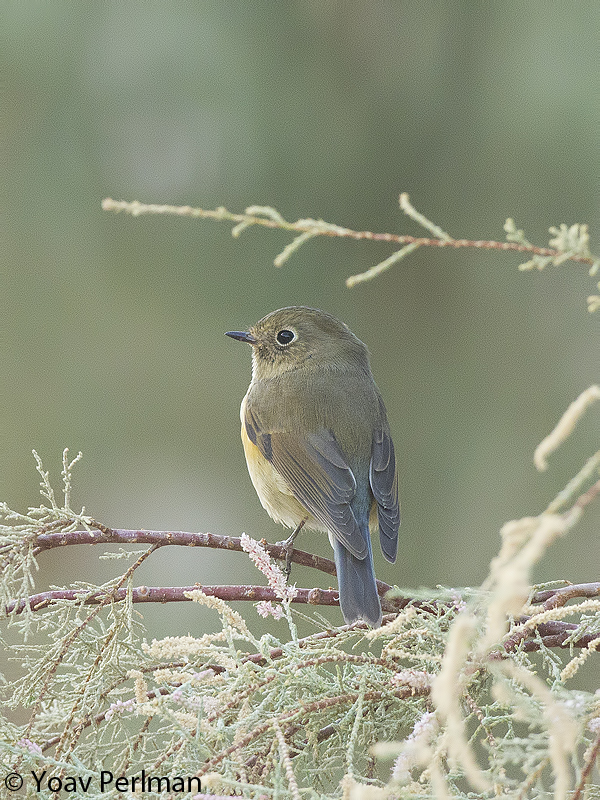 |
||
| Eilat, Red-flanked Bluetail (Yoav Perlman) | ||
Dark-throated Thrush (Turdus ruficollis atrogularis)
26/1/11 A 1st winter male found at Kerem Ben-zimra, upper Galillee (Rei Segali and Sachi Luria). The 13th bird recorded in Israel and the first one since 1997. Seen by many birders within the following two weeks.
| Dark-throated Thrush(Tarsiger cyanurus) | ||
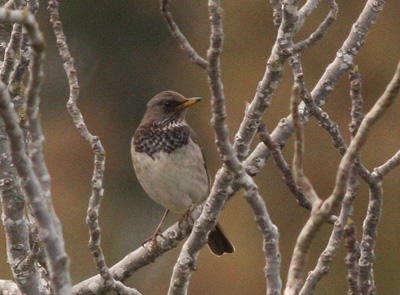 |
||
| Kerem Ben-zimra, upper Galillee, Dark-throated Thrush (Rei Segali) | ||
Basra Reed Warbler (Acrocephalus griseldis)
23/5/12 – One caught at the Lehavot Habashan ponds, Hula valley (Ella Rimon).
2/6/12 A second individual caught at the Hula (Francis Argyle). Both birds had no signs of breeding (brood patch or cloacal protuberance).
| Basra Reed Warbler(Acrocephalus griseldis) | ||
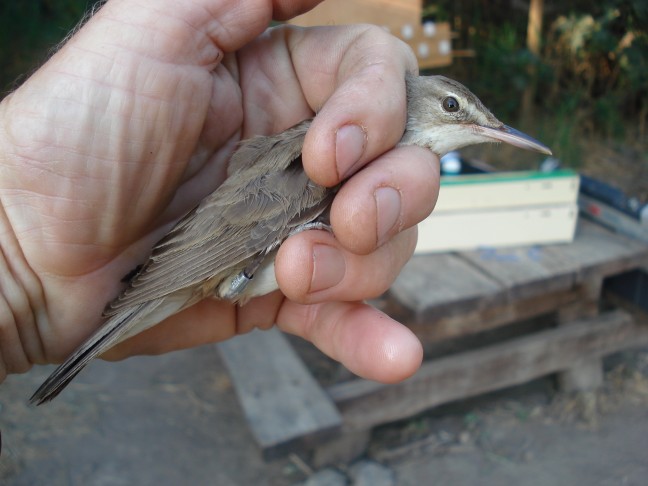 |
||
| Lehavot Habashan, Basra Reed Warbler (Francis Argyle) | ||
Green Warbler (Phylloscopus nitidus)
1/5/08 One caught at Midreshet Ben Gurion, central Negev (Darren Burns and Eran Makover).
14/10/09 - 1 caught at Netiv Halamed Hae Reservoir by Ron Haran.
29/10/10 One at upper Wadi Shanni, Eilat mountains (Re'a Shaish)
4/6/11 One caught at Ashdod, southern coastal plains (Yoav Perlman). These records represent the 3rd, to 6th records for Israel.
| Green Warbler(Phylloscopus nitidus) | ||
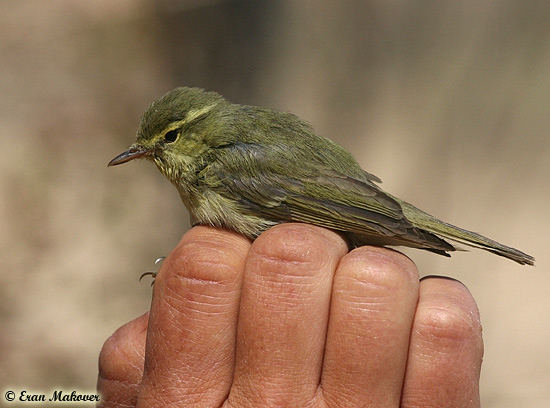 |
||
| Green Warbler at Sede Boker (Eran Makover) | ||
| Green Warbler(Phylloscopus nitidus) | ||
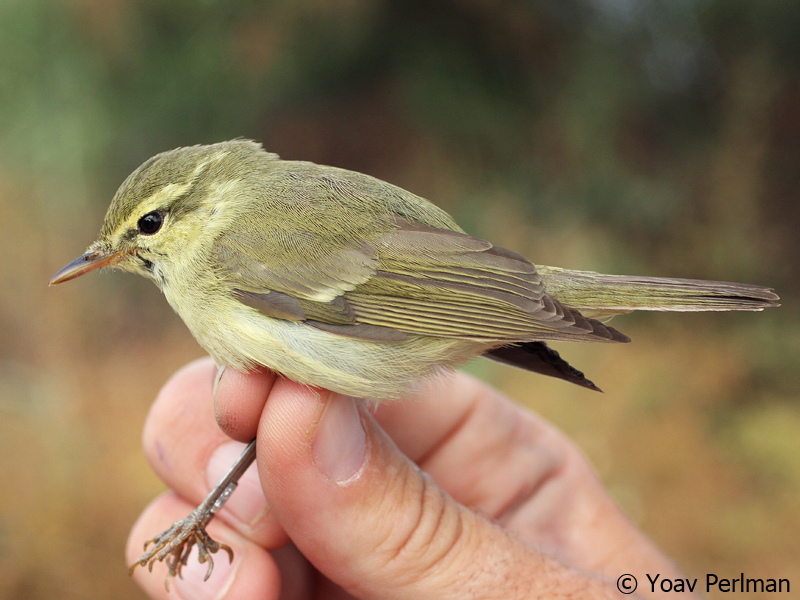 |
||
| Ahdod, Green Warbler (Yoav Perlman) | ||
| Green Warbler(Phylloscopus nitidus) | ||
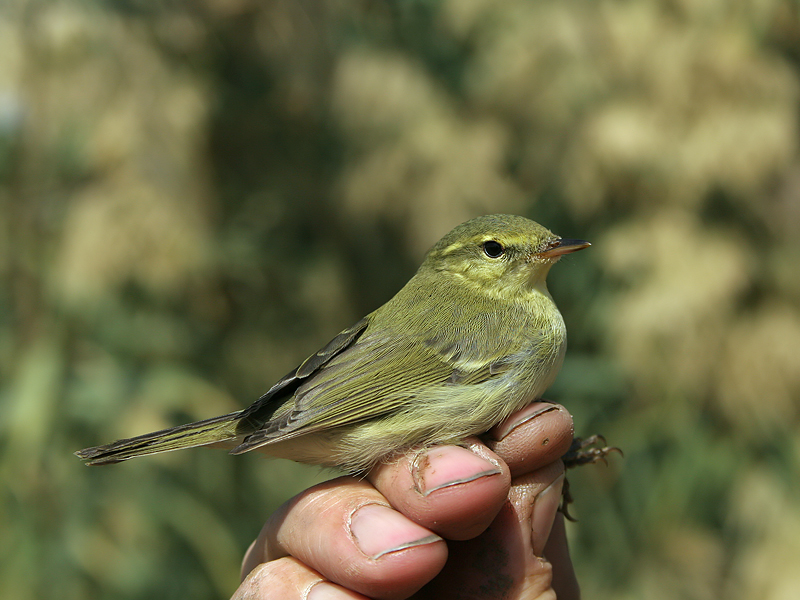 |
||
| Netiv Halamed Hae Reservoir, Green Warbler (Yoav Perlman) | ||
Dusky Warbler (Phylloscopus fuscatus)
25/10/11 One caught at Ein Afek (Itai Shimshon). The 4th record for Israel and the first since 1997.
| Dusky Warbler(Phylloscopus fuscatus) | ||
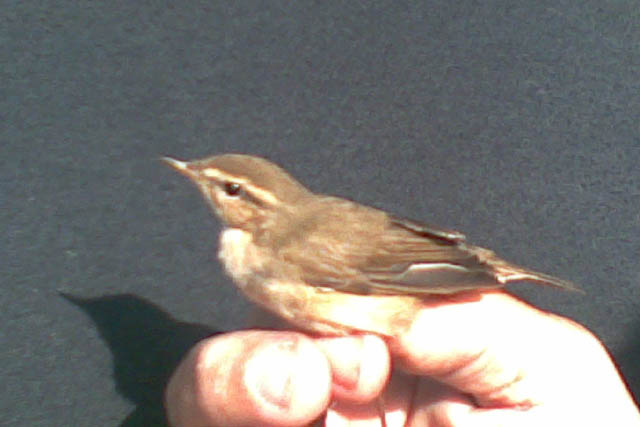 |
||
| Ein Afek, Dusky Warbler (Itai Shimshon) | ||
Grey Hypocolius (Hypocolius ampelinus)
20-21/5/11 One female at Kibutz Samar (Eran Sadan).
28/11/11 One male in Eilat (Barak Granit).
Both records represent the 13th and 14th record for Israel.
| Grey Hypocolius(Hypocolius ampelinus) | ||
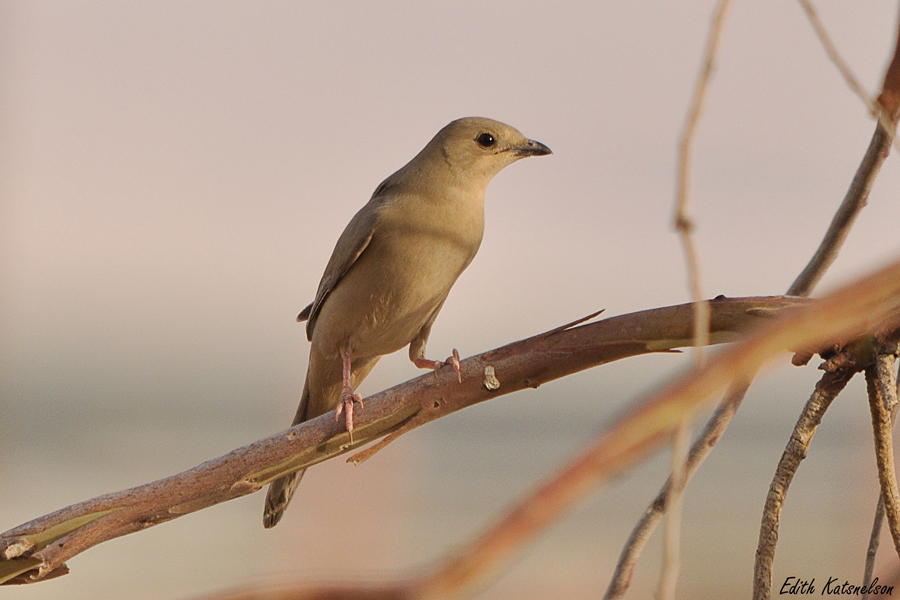 |
||
| Kibutz Samar, Grey Hypocolius (Edith Katsnelson) | ||
Rustic Bunting (Emberiza rustica)
14/11/09 One seen and photographed at Nafcha, Central Negev ridge (Barak Granit and Shachar Alterman).
5/11/10 One seen and photographed at Kmahin, Nitzana area by Yochai Koren and Uri Arad.
The species had became much rarer during 1990's and 2000's compare to the 1980's (moer than annual back then) with far less than 1 record a year.
| Rustic Bunting(Emberiza rustica) | ||
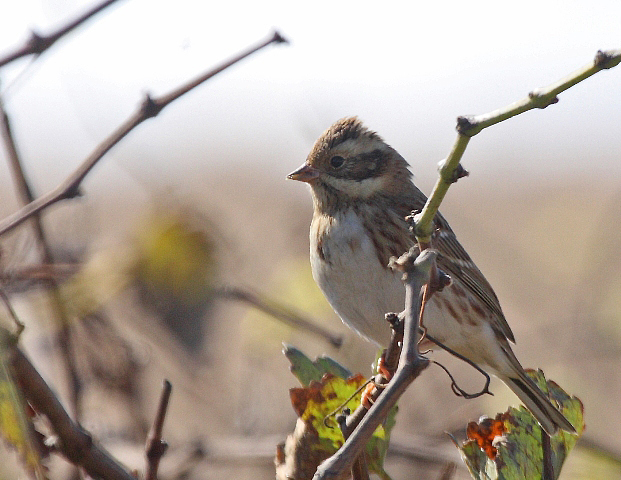 |
||
| Rustic Bunting at Nafcha (Shachar Alterman) | ||
Red-headed Bunting (Emberiza bruniceps)
15/5/10 Adult male near Ezuz, Nitzana area (Amir Ben-Dov). 2nd national record and first since May 1979.
| Rustic Bunting(Emberiza bruniceps) | ||
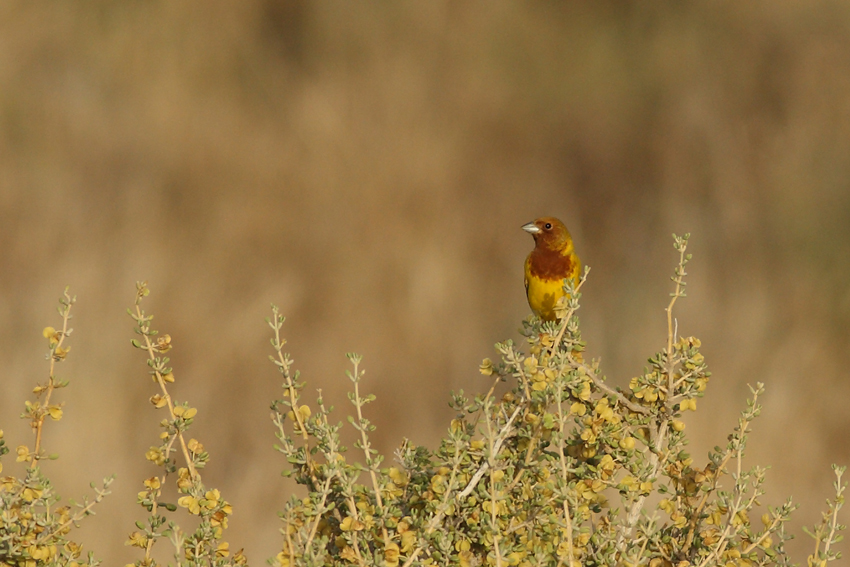 |
||
| Ezuz, Nitzana, Red-headed Bunting (Amir Ben-Dov) | ||
Section 2: Rejected Records
Oriental Cuckoo (Cuculus optatus)
A 2nd year male caught at the Jerusalem bird observatory on 27/4/08 by Yosef Kiat appeared promising. The bird was seen again in the field the next day, and possibly gave appropriate calls. Kiat realized the bird was extremely small for Common Cuckoo, and further measurements suggested that some features of the bird fall outside the range of Common Cuckoo.
A thorough review of this individual, however, with the help of the excellent article by Lindholm Linden (Oriental Cuckoo in Finland, Alula 4/2003) revealed that the JBO cuckoo fails the "Oriental test" for lacking three important features:
1) The most important feature is the total number of white bars on primaries 4-10. According to L&L in OC it should sum to 24-43 (average 35), while in CC 37-59 (average 47). Quoting L&L: if the rule is amount of white bars > 40 means CC, otherwise OC, in their sample of 100 cuckoos only 3 OC (with 41, 42, and 43 bars) and one CC (with 37) would have been misidentified.
It is not always easy to define all bars on the under-wing, but yet, even when ignoring some little white spots on the JBO bird underwing, the overall result sums to 47-50 bars, way over the limit for OC. Comparing figure 14 in L&L to the JBO bird's underwing should give an idea for the different look of the underwing of the two species. In OC primaries, 5-9 are barred, otherwise the underwing appears grey (except for the white patch formed by the primary bases).
| Common Cuckoo(Cuculus canorus) | ||
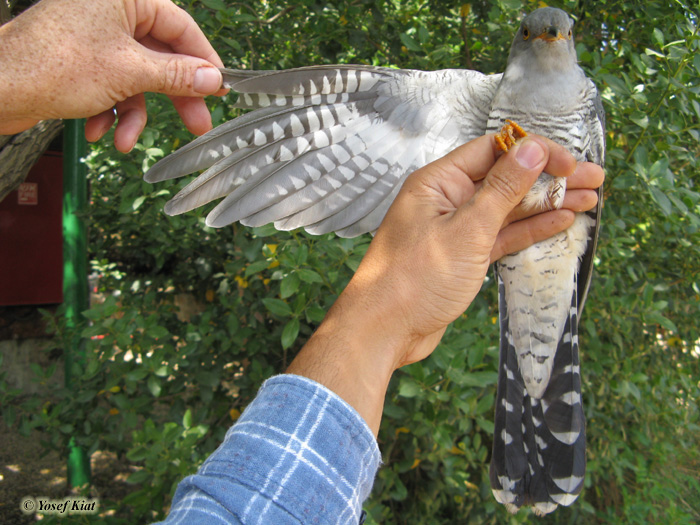 |
||
| Jerusalem, Underwing pattern of the JBO Cuckooindicates a Common Cuckoo (Yosef Kiat) | ||
2) Another important feature, not too obvious if not searched for, but easy to see is the pattern on foremost underwing coverts. In OC they are pure white, lacking any bars. In CC these coverts are barred, as they are in the JBO cuckoo.
3) In OC the coverts around that un-barred area mentioned above are mostly slightly buffish, whereas in CC they are white. In the JBO bird the whole underwing lacks buffish colours.
There are other small differences between the species, mostly not clear-cut, but the three major features discussed above should be adequate to suggest that the JBO bird is for the most part a small and somewhat aberrant Common Cuckoo.
Although rejected, compliments should still go to the ringer, Yosef Kiat, for not only noticing he had an odd individual, but also for the excellent documentation, taking as many morphometrical measurements and pictures, including of the under-wing, that highly facilitated reviewing this bird.
European Storm Petrel (Hydrobates pelagicus)
A bird flushed by Amir Ben-Dov while standing on the seashore at Ashdod on 28/1/ 12 following a storm appeared like a good candidate for this species not seen in Israel for 20 years. A close examination of the images, however, supported by a few European experts, suggested that Leach's Storm Petrel could not be excluded in this case. The extended white rump patch is highly variable in Leach's Storm Petrel. Furthermore, both the tail shape and the whiteunder-wing patch appear off for European Storm Petrel. Consequently, following a long discussion, the record had been withdrawn by the observer.
| Leach's Storm Petrel(Oceanodroma leucorhoa) | ||
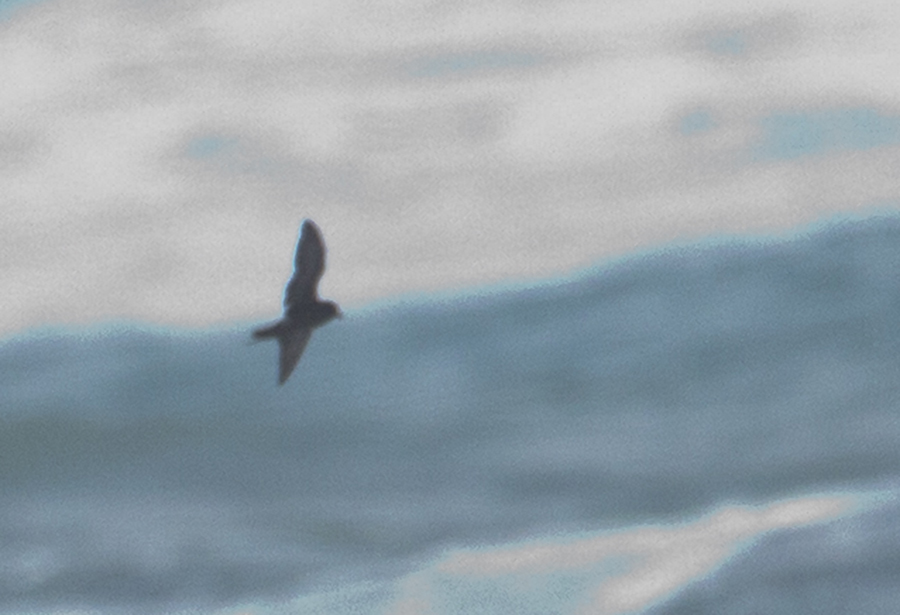 |
||
| Ashdod, Storm Petrel sp. suspected Leach's (Amir Ben-dov) | ||
Special thanks to Killian Mullarney and James P. Smith for the review and inputs on this record.
Section 3: Species removed from the Israeli list
New knowledge and information regarding the characteristics, variation and identification of the newly described Basalt Wheatears Oenanthe lugens warriae (Shirihai et al 2011), has led to correct the identification of two vagrant wheatear species recorded in Israel, Black and Variable Wheatears (see below). In accordance with Shirihai 2012 ( Correcting the identification of two rare wheatear records in Israel) the IRDC members voted in favor of Shirihai's suggestion to officially remove these two species from the Israeli bird list.
Black Wheatear Oenanthe leucura
One bird was claimed in Eilat, back in December 1982. The bird was originally found by Ehud Dovrat and was seen by several observes, including Yaron Basar, Oz Horin, Amir Ben Dov, Rami Mizrachi, Yoav Golan and Hadoram Shirihai, and was also photographed by Alon Ber. Over the years the identity of this 'Black Wheatear' was discussed, and even questioned by some of the latter observers and the current IRDC members. In a sense, this particular record triggered an interest in Basalt Wheatear. In 1985, H. Shirihai visited the BMNH (Tring UK) and identified the first specimen of Basalt Wheatear. This individual was collected by Bigger in 1926 in E Jordan but was misidentified as young White-crowned Black Wheatear (Oenanthe leucopyga). This specimen is now serving as the Type Specimen of Oenanthe lugens warriae. However, since it was the only specimen in which to make comparisons, some of the observers thought the Eilat bird from 1982 was too big, and thus, the birds identity remained Black Wheatear (see also Shirihai 1996, Birds of Israel). Following his detailed study of the Middle Eastern wheatears, and his observations of a Basalt Wheatear in NE Jordan in 2000-2001 (Shirihai et al 2011), together with the IRDC, Shirihai (2012) concluded that the Eilat 1982 wheatear was misidentified. Further, Shirihai and the IRDC agree that in light of new information, the identification of the Eilat bird is a Basalt Wheatear, which is the first to record of the taxon in Israel. Shirihai & Svensson (in prep) will recognize the Basalt Wheatear as a distinct species: Oenanthe warriae.
| Basalt Wheatear(Oenanthe warriae) | ||
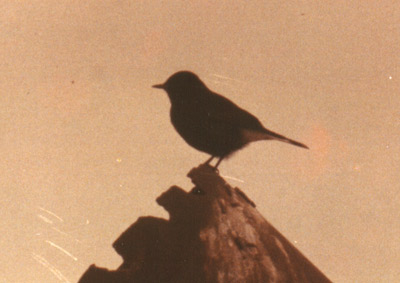 |
||
| The Dec 1982 wheatear at Eilat (images by Alon Ber) | ||
| Basalt Wheatear(Oenanthe warriae) | ||
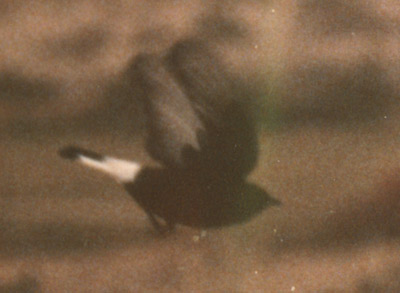 |
||
| The Dec 1982 wheatear at Eilat (images by Alon Ber) | ||
Variable Wheatear Oenanthe picata opistholeuca
One bird seen (but not photographed) in Eilat in February 1986. The bird was described in detail in Shirihai's Sandgrouse special publication, 50 New Species. In light of new knowledge regarding the variation and identification of Basalt Wheatear, Shirihai believes the bird was misidentified and the record should be resubmitted as a Basalt Wheatear (Shirihai 2012). The misidentification was largely due to the lack of knowledge that the male Variable and 1st CY Basalt Wheatears are virtually identical in plumage, including the impression of the wing pattern in flight. For full details, see Shirihai 2012. Accordingly, following Shirihai's suggestion, the Variable Wheatear has been removed from the Israeli list and from the Western Palearctic bird list, since this bird was the only record from the entire region.
Commitee Members: Avner Cohen, Barak Granit, Eyal Shochat, Susannah B. Lerman.
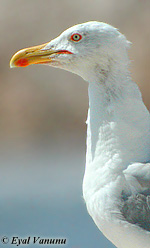 Yellow-legged Gull (Larus michahellis) Ma'agan Michael, May.05 |
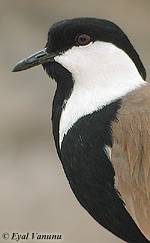 Spur-winged Lapwing (Vanellus spinosus) Ma'agan Michael, Apr.06 |
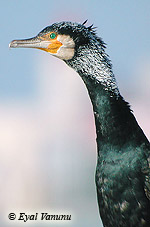 Great Cormorant (Phalacrocorax carbo) Acre, Jan-06 |
Back to top